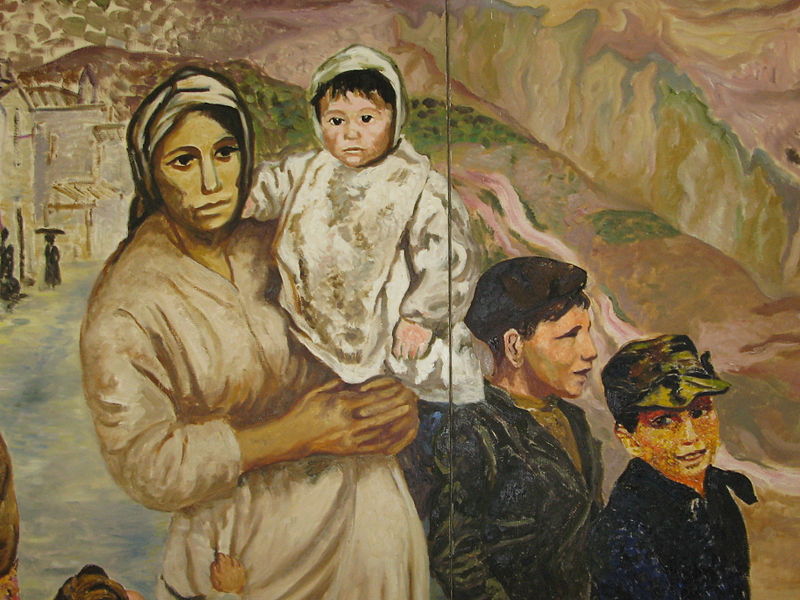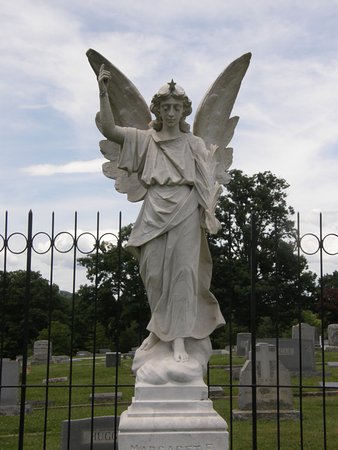Reading a work of fiction set in your vacation destination is a great way to get more out of your trip.
For me, planning a trip is half the fun. I love reading all about the place I’m going to be. Of course, I give some time to sites like TripAdvisor and HappyCow to get an idea of some of the attractions and restaurants I’m going to visit. It’s also likely that I’ll buy at least one travel guide (Lonely Planet, Rough Guides, and Rick Steves are some of my favorites.)
I’ll also go down the YouTube rabbit hole. Food videos and walking tours are a great way to get a lay of the land.
For off-the-beaten-path attractions and dishes, my favorite website is AtlasObscura. I can’t tell you how many oddball things I’ve seen because of these good folks. The Haus Schwarzenberg Street Art Gallery in Berlin, the Cathedral of Junk in Austin, the Elvis statue in Honolulu, and the Fiat Test Track in Turin are just a few of the places I wouldn’t have known about if not for Atlas Obscura. They also have a sister site called Gastro Obscura for strange and unusual cuisine.
Then, there’s books. I’ve already mentioned guide books, but what I’m talking about here is fiction. Specifically, novels.
I think reading a work of fiction that takes place in a place I’m planning on visiting can give an insight into the psyche of some of the people living there. In addition, even though these are works of fiction, they often mention very real places that you can still visit.
Here’s a few of my favorite destinations and novels that are closely associated with them.
Ulysses by James Joyce – Dublin

Novelist James Joyce was born and raised in Dublin. He left the city in his early 20’s and lived on the continent for the rest of his life, dying in Zurich from a perforated ulcer in 1941 at the young age of 59. Despite living away from Ireland for almost all of his adult life, Joyce wrote movingly and insightfully about the city of his birth.
Joyce wrote the classics Finnegans Wake and The Dubliners. But he is best known for his novel Ulysses which takes place in Dublin over the course of a single day, June 16th, 1904. Ulysses is a groundbreaking and experimental stream-of-consciousness novel that is today widely considered to be the greatest novel ever written, even though when it was published it was banned in many places and faced an obscenity trial in the United States.
Ulysses’ main character, Leopold Bloom, is celebrated on Bloom’s Day, every June 16th, in Dublin. Bloomsday is marked with readings from Ulysses and retracing some of Leopold’s steps described in the book.

One of these spots is Sweny’s Pharmacy. In the book, Bloom visits here and admires the pharmacy’s compounds, eventually taking a bar of “lemony wax,” a lemon scented soap, which he promises to pay for later, but never does.
Today, Sweny’s holds Joyce readings and hosts Joyce reading groups. Check their website for the schedule. But, for a tangible artifact, you can buy your own bar of lemony wax at Sweny’s. They sell them for €5.
To recreate Bloom’s journey, the folks at bookstr.com have published a map with locations from the book.
There’s also a giant mural featuring Ulysses characters Leopold Bloom and Buck Mulligan on the exterior of the Bloom Hotel.
The Leopard by Giuseppe Tomasi di Lampedusa – Sicily
The Leopard by Giuseppe Tomasi di Lampedusa tells the story of a Prince who, caught up in political upheaval in Sicily, finds his position and wealth eroding, something Giuseppe had firsthand knowledge. The Leopard was also made into a fine film in 1963 starring Burt Lancaster and Claudia Cardinale.
Giuseppe’s daughter in law, Duchess of Palma, Nicoletta Polo, along with her husband own the Palazzo Lanza Tomasi and have renovated the palace and turned it into Butera 28 Apartments, where visitors can stay.
Best of all, Nicoletta offers cooking classes in the actual palace. She takes guests to the Il Capo market to shop for ingredients which are then prepared and enjoyed.
If you want to better understand the crumbling former glory that was Sicily, The Leopard (both the book and film) is a good place to start.
Christ Stopped at Eboli by Carlo Levi – Basiliata, Italy
Carlo Levi was a doctor, painter, and writer born in Turin, Italy. Levi was also a stout anti-fascist at a time (1920’s & 30’s) when that could get you into a lot of trouble. In fact, Carlo was arrested and exiled to Aliano in southern Italy (Basilicata) from 1935 to 1936.

During his exile, Levi volunteered as a doctor (he received his MD from the University of Turin), painted evocative pictures of the people of Basilicata, and wrote about his experiences.
His master work “Christ Stopped at Eboli” was about his time in exile. The title refers to the local people’s belief that Christ stopped before he reached Basilicata and they, therefore, were bypassed by Christianity and the modern world; a rather fatalistic view of their reality. In fact, the people of southern Italy in general and Basilicata specifically were thought of as inferior, and even sub-human, by some of their fellow citizens in the north.
Levi writes movingly about the poverty the people must endure and their everyday lives as they fight to survive in Fascist Italy.
When Christ Stopped at Eboli was published in 1945, a light was finally shown on the extremely poor living conditions the population of Basilicata faced. “The Problems of the South” could no longer be ignored and some money was finally invested to improve living conditions. Today, southern Italy and Sicily are still economically worse-off than northerners, but the gap may be shrinking and much of the dirt-poor wretched poverty is gone.
The most obvious vestige of this time is the caves of Matera in Basilicata, a prehistoric cave settlement that was inhabited as far back as 7000 BCE. The Italian government forced most of the residents out of the caves in the 1950’s (though some were living there as late at the 80’s) as part of their effort to tackle “The Problems of the South.”
Today, tourism is a big part of the economy of Basilicata and some of the caves have been renovated. You can dine in a cave restaurant, stay in a cave hotel, visit a cave church, and see modern artwork in a cave gallery.
Look Homeward, Angel by Thomas Wolfe – Asheville, North Carolina

Asheville’s literary lion is Thomas Wolfe. His novel Look Homeward, Angel lovingly describes his hometown of Asheville, renamed Alatamont in the book. The title refers to the angel statue that sat on the porch of his family’s gravestone business in Asheville. The marble statue, restored in 2017, now resides at the Oakdale Cemetery in nearby Hendersonville.
Wolfe grew up in a boarding house called “Old Kentucky Home” run by his mother. A fictionalized version of the house, renamed “Dixieland,” is beautifully described by Wolfe in Look Homeward, Angel. Today, the boarding house is the site of the Thomas Wolfe Memorial. There is an excellent tour of the house, but fans of the writer should also embark on the self-guided Thomas Wolfe Walking Tour of Asheville. Over two dozen landmarks are outlined with everything from the library where Wolfe spent many afternoons during his childhood, to the jail where he spent the night sleeping off a bender.
Honorable Mention: The Hobbit & Lord of the Rings by J.R.R. Tolkien – New Zealand
J.R.R. Tolkien’s books “The Hobbit” and the “Lord of the Rings” trilogy are some of the best selling books of all time. Tolkien is considered the foremost fantasy writer.
Tolkien was a Brit who was born in South Africa. He never visited New Zealand, but his books will forever be associated with the tiny island country because of the Peter Jackson film adaptations of his books which were shot there.
So, if you want to see some Hobbit sites, you need to go to New Zealand. Most of the sets were dismantled after filming the original Lord of the Rings Trilogy. However, new sets were built and some older sets rebuilt for The Hobbit: An Unexpected Journey in 2011. They were preserved and you can visit them in Hobbitown about a 2 hour drive from Auckland.
About the Author

Brent Petersen is the Editor-in-Chief of Destination Eat Drink. He currently resides in Setubal, Portugal. Brent has written the novel “Truffle Hunt” (Eckhartz Press) and the short story collection “That Bird.” He’s also written dozens of foodie travel guides to cities around the world on Destination Eat Drink, including in-depth eating and drinking guides to Lisbon, Porto, Sintra, Monsaraz, and Evora in Portugal. Brent’s podcast, also called Destination Eat Drink, is available on all major podcasting platforms and is distributed by the Radio Misfits Podcast Network.
